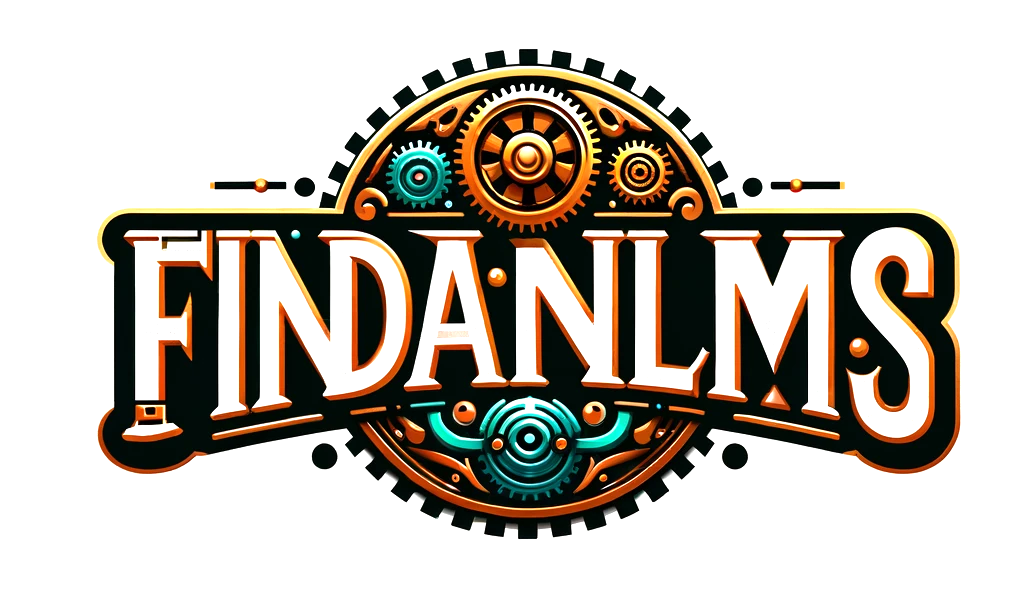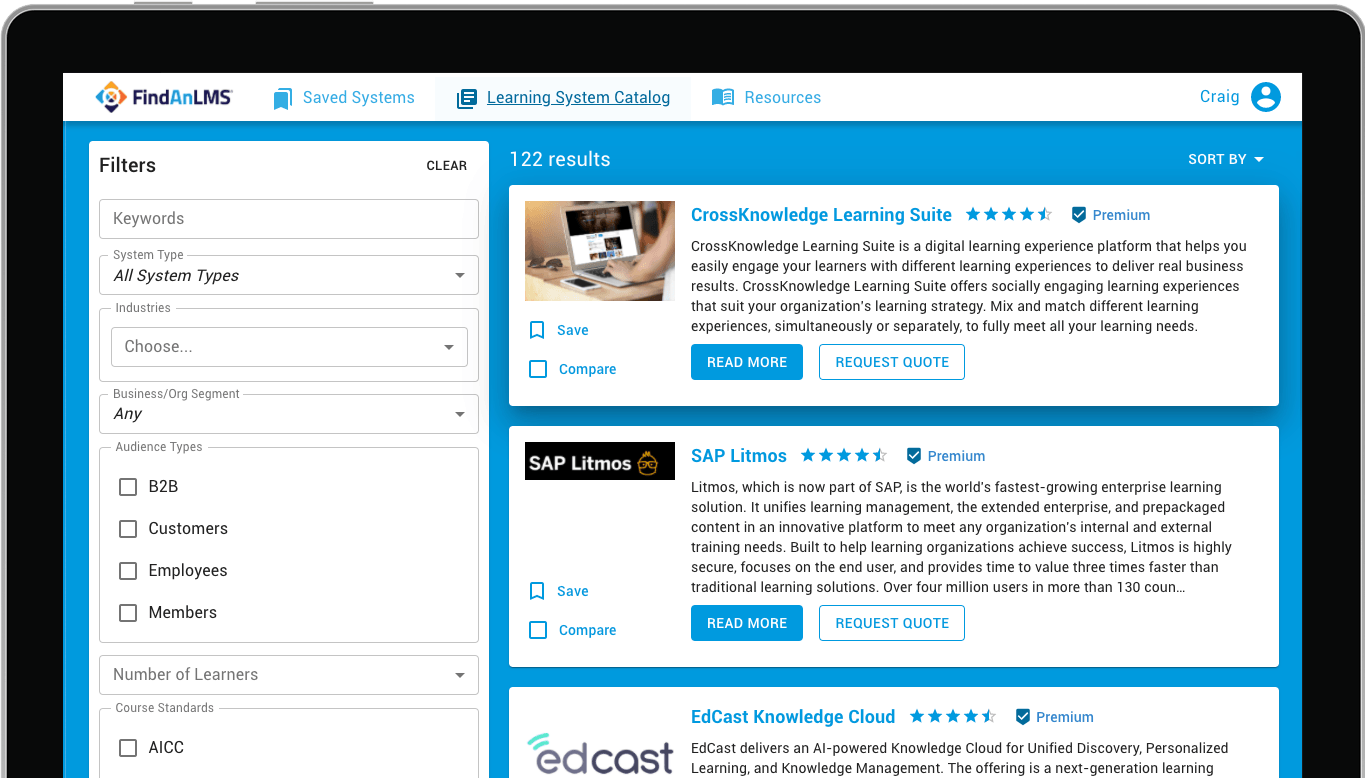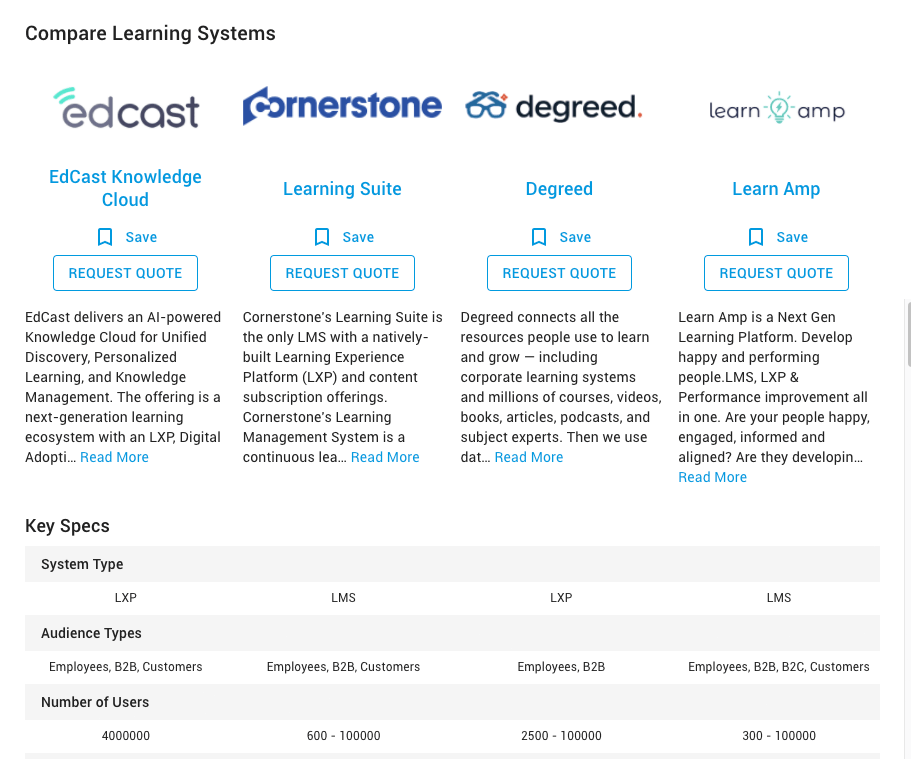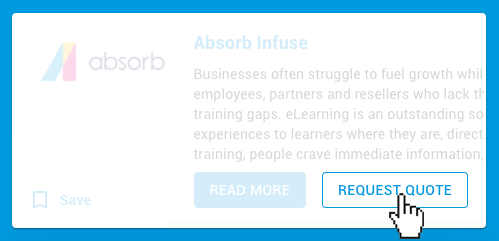Acting as the point person for employee training can be a challenging role, so many companies turn to a learning management system, or LMS, to assist in organizing and delivering training. While this works well for many organizations, others are seeking more engagement to encourage communication and professional development. A learning experience platform (LXP) focuses on providing employees a place to explore and grow, choosing their training path intuitively.
We made that sound like a strict dichotomy, but nothing could be further from the truth when it comes to online training. LMS vendors frequently advertise LXP features, LXP solutions market features associated with learning management systems, and both like to use other acronyms such as TXP (talent experience platform) or TDP (talent development platform). If you’d like help with the research that goes into choosing an LXP or any other e-learning solution, Craig Weiss is the man you need. With over 20 years of professional experience analyzing all kinds of e-learning solutions, his expertise will help you find the right LXP for your business.
If you’re frustrated by the search for an e-learning solution that meets your company’s requirements, don’t despair; we’ve got the solution. Weiss launched FindAnLMS.com to help average people find whatever they need to facilitate corporate learning. Signing up for a free account at FindAnLMS.com provides you with a database and comparison tool for dozens of LMS and LXP options. We exclusively focus on e-learning, giving you the in-depth knowledge you need on LXPs from Degreed and Edcast to Totara Engage and Percipio by Skillsoft. And if you’re still on the fence, FindAnLMS.com can help you narrow down the search by filtering out the LXPs that aren’t right for your business.
What differentiates a learning experience platform (LXP) from a learning management system (LMS)?
These days, most corporate training is delivered via an e-learning system — it’s both simpler and more effective than holding in-person training sessions. But those are just two examples of why the LXP market is booming. While both LXP and LMS options are designed to deliver training content to your employees, there are a couple of key differences:
- An LMS is the best way to deliver precisely structured internal training content.
- An LXP can support a wide array of content from sources both inside and outside a company’s firewall, integrating with other e-learning content providers (both open-source and licensed) like Coursera, LinkedIn Learning, Open Sesame, GO1, and more.
- An LMS focuses on the needs of the business to deliver training and online learning to employees, customers, or both.
- An LXP focuses on customized employee development, providing tailor-made content that’s relevant to individual employees’ professional goals, using materials like blog posts, articles relevant to a specific industry, custom-made training modules, MOOCs, videos, gamification, and more.
Put another way, the learning experience platform has a feature suite dedicated to helping learners explore learning, while an LMS is designed to help administrators manage learning. Content drives the LXP while management is the most important thing for an LMS. Most organizations need both services, and companies often get a better price with a single standalone solution than bolting an LXP onto an LMS. This is why there’s so much confusion about what an LXP actually is even among e-learning professionals.
How are learning systems converging?
When the first LXP solution (DeGreed) entered the market, it was designed to address many of the shortcomings associated with the more traditional LMS. Users would see courses tied to specific skills, with data and algorithms showing them only content relevant to their needs. Learning was a self-directed experience, with a strong emphasis on informal training rather than mandatory compliance-related learning.
The informal nature of LXPs was their primary selling point, but management quickly pushed back wanting more control over their training programs. Ultimately, management feedback led to a different kind of LXP product where skills and self-directed learning were reduced to talking points while mandatory training (with management oversight) became the reality. Meanwhile, LMS customers were envious of some LXP features and asked their vendors to add them. While technically distinct, the LMS and LXP have been drifting toward each other to the point that DeGreed no longer calls itself an LXP.
Many e-learning experts including the aforementioned Craig Weiss stopped paying attention to the acronym vendors use, instead evaluating based on what they offer to see if it’s an LMS, LXP, TXP, or something else entirely.
What are the most important features to look for in an LXP?
If you can’t take a vendor’s word on whether they’re an LXP or not, how can you tell? Here are seven features that every LXP should have:
- Learning paths
A true LXP supports personalized learning paths allowing users to see only content that might be of interest to them. Content recommendations are powered by some kind of AI or machine learning and are ideally drawn exclusively from the business in question. For example, the content of interest to employees at Coca-Cola should have no bearing on the course recommendations seen by users at Pepsi.
- On/off mobile synch
Employees love their mobile devices, so it makes sense that mobile content would do a better job of engaging them than tying learning to a desktop computer. A great LXP will have a dedicated mobile app to ensure nothing is lost in translation.
- Video management
All e-learning solutions support video, but an LXP allows users to do things with it. For instance, automatic transcriptions may activate multimodal learning to help employees grasp difficult concepts while searchable indexes make video content easier to find.
- Access to third-party content
The LXP is a content aggregator at its core, meaning that your business cannot be responsible for the development of everything it needs. Instead, you should have access to content from multiple third parties such as BizLibrary and LinkedIn Learning, perhaps for an added fee.
- Multiple playlist options
Users should be able to choose how training content is displayed on a dashboard personalized to each user with an LXP. These playlists should have a Netflix-styled interface, and employees should be able to share them with others at will.
- Mentoring/coaching functionality
Employees should be able to benefit from their more experienced colleagues on an LXP. This feature can look very different based on the needs of the users involved, but it has to be present in some capacity.
- Strong skills emphasis
Most importantly, the LXP should never forget that skills and skill development are the primary reason they exist. Employees should be able to look up what they need to pursue their goals and find appropriate training content without leaving the platform.
Sadly, few LXP vendors get all of these features right so your business will probably have to make a few compromises. The secret to finding a great LXP is identifying which features are most important to you and going from there.
How can FindAnLMS.com help me find the right LXP?
An LXP gives you and your employees more flexibility and personalization around training, but it’s important to do your research. With a projected annual growth rate of over 50%, the LXP market is flooded with different platforms, making it tough to find the LXP that’s got what your business needs. And for those looking for both LMS and LXP solutions, is there a combo solution that works? At FindAnLMS.com, we go beyond providing you with comprehensive information about learning experience systems. You also get unlimited access to the wisdom of e-learning guru Craig Weiss on LXP, LMS, talent development, and other learning systems.
Almost one-third of learning and development professionals want to incorporate gamification and open-source content into their training programs, but many lack the time to do the comprehensive research that’s required to find the perfect solution. That’s where FindAnLMS.com comes in. Our comparison tool does the hard work for you, allowing you to compare all of the details you need to know, like AI and gamification capabilities, content curation options (sharing, commenting, ratings), and so much more. And after you narrow down your search to the LXP that’s got all the right stuff, you can contact the company directly through FindAnLMS.com. Don’t let our name mislead you — FindAnLMS.com is so much more than just an LMS database. Our catalog gives you access to honest, unbiased reviews of a variety of LXP solutions from learning management industry-leading expert Craig Weiss. We’re dedicated exclusively to helping you find the best solution to your corporate e-learning and training needs, so sign up for a free FindAnLMS.com account today to take your employee training to the next level.







